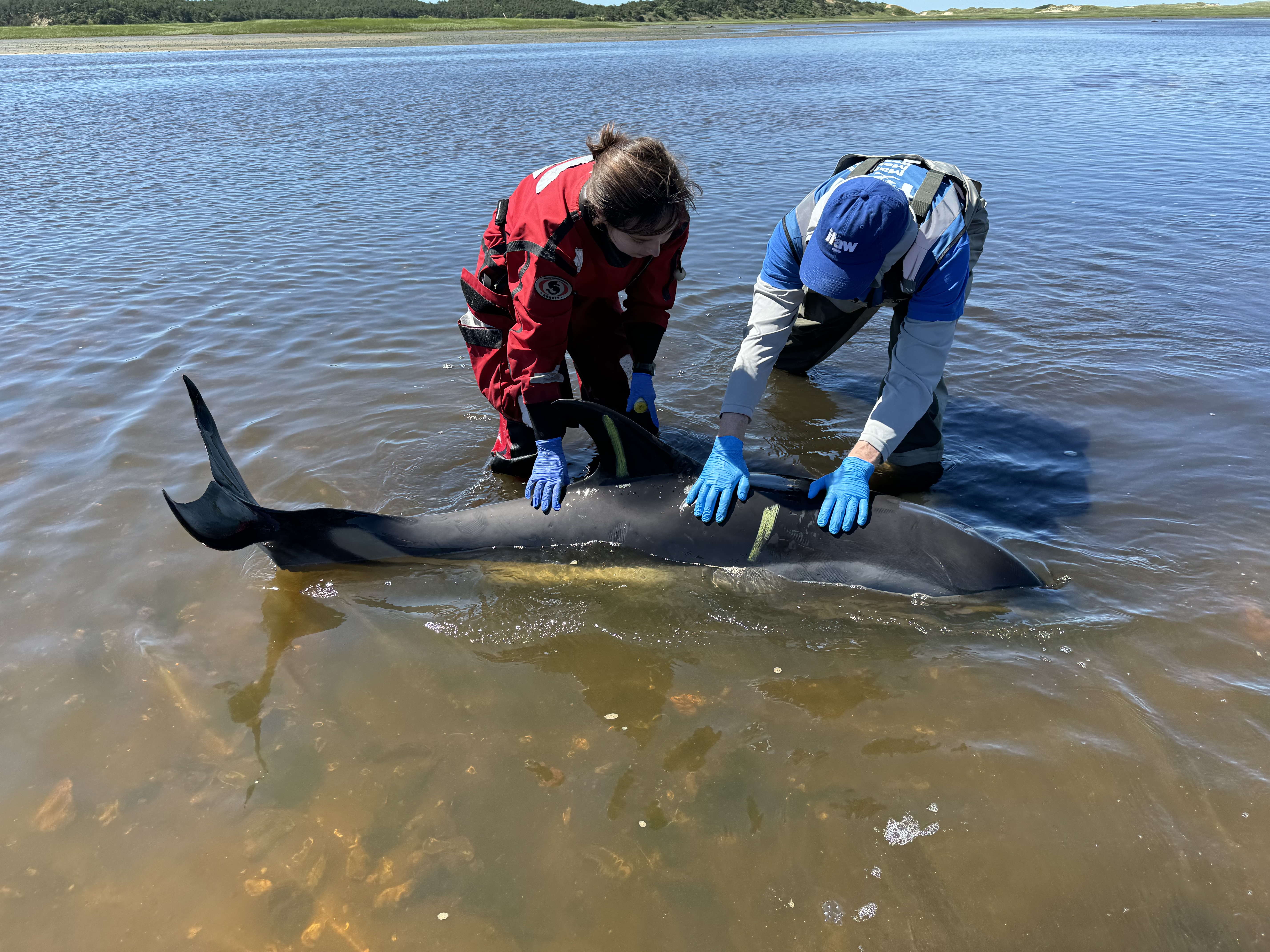A mass stranding event involving a total of 146 dolphins on the Cape Cod peninsula in the northeastern United States has officially been declared the largest such event in the country’s history. According to the International Fund for Animal Welfare (IFAW), whose rescuers responded rapidly to the distressed cetaceans, 37 animals died in the event and seven more were humanely euthanized.
On Friday, June 28, IFAW responded to a report of 10 Atlantic white-sided dolphins (Lagenorhynchus acutus) apparently stuck in a shallow mudflat on the shores of Wellfleet, Massachusetts. However, when the team arrived on the scene, it was immediately clear that they were dealing with many more animals than they had thought.
“We arrived to what appeared to be 80 to 100 dolphins on the shallow mud flats of Wellfleet’s Herring River ‘Gut’ – a global epicenter for mass strandings,” said stranding coordinator Misty Niemeyer in a statement. In actuality, the number on that first day quickly rose to 125, the largest stranding that IFAW had seen in its 26-year history in the area.
“This rescue had many challenges due to the number of dolphins, the large size of many of the animals, how spread out they were over a large area, the difficult mud conditions, and the complicated locations from which we could reach them,” Niemeyer said. In a grueling 12-hour operation, a team of over 150 people from multiple agencies, including 100 trained volunteers, managed to herd most of the animals into safer, deeper waters.
Unfortunately, 10 dolphins had already died by the time the rescuers got to the scene.
The surviving dolphins were carefully herded toward deeper waters.
Image credit: © IFAW
This particular region of coastline is a known risk area for dolphin strandings due to its shape and the strength of the fluctuating tides it sees. IFAW responds to around 315 strandings around Cape Cod every year.
The following morning, June 29, an IFAW team located 10 of the rescued dolphins once again straying into dangerous waters, and 25 more were seen swimming in the shallows just down the coast at Eastham.
Concerns continued into the next day, with a small group of animals being monitored in Wellfleet Harbor and a further stranding of around 20 dolphins in Brewster, MA. Two of them died before rescuers could reach them, but the remainder were saved and moved out to deeper waters.
Overall, thanks to the efforts of the team, 70 percent of the 146 dolphins involved in the incident survived.
As well as those that died of natural causes, the team had to make the decision to humanely euthanize a small number of animals. IFAW’s Deputy Vice President of Rescue Katie Moore explained why this sometimes becomes necessary: “The very social nature of these dolphins means they will stick together even in a bad situation. By removing individuals that are not well, the group may be more easily moved offshore.”
Several weeks later, on July 15, the event was officially declared the largest mass dolphin stranding ever seen in the US.
It’s natural to wonder how and why so many animals could get into difficulties all at the same time. One study has even suggested that, in some cases, an Alzheimer’s-like disease could be to blame, while research into whale strandings suggests that factors within the natural environment are likely to be the main cause. Toxic pollutants and solar storms are other suggestions that have been put forward.
IFAW reported on July 8 that it is “gathering data to understand what may have caused this mass stranding,” but there are no clear answers yet. Thanks to the coordinated response, tagging data showed that over 100 dolphins had returned to swimming in deeper waters at a safe distance from the shore.
The multi-day rescue operation saw hundreds of responders coming to the aid of a total of 146 dolphins.
Image credit: © IFAW
If you ever come across a stranded dolphin, it’s important that you don’t try to return it to the sea yourself. Instead, call for help from the experts, like the team at IFAW, and try to keep other people and pets away from the area.
Source Link: Mass Stranding Involving 146 Dolphins At Cape Cod Declared Largest In US History
